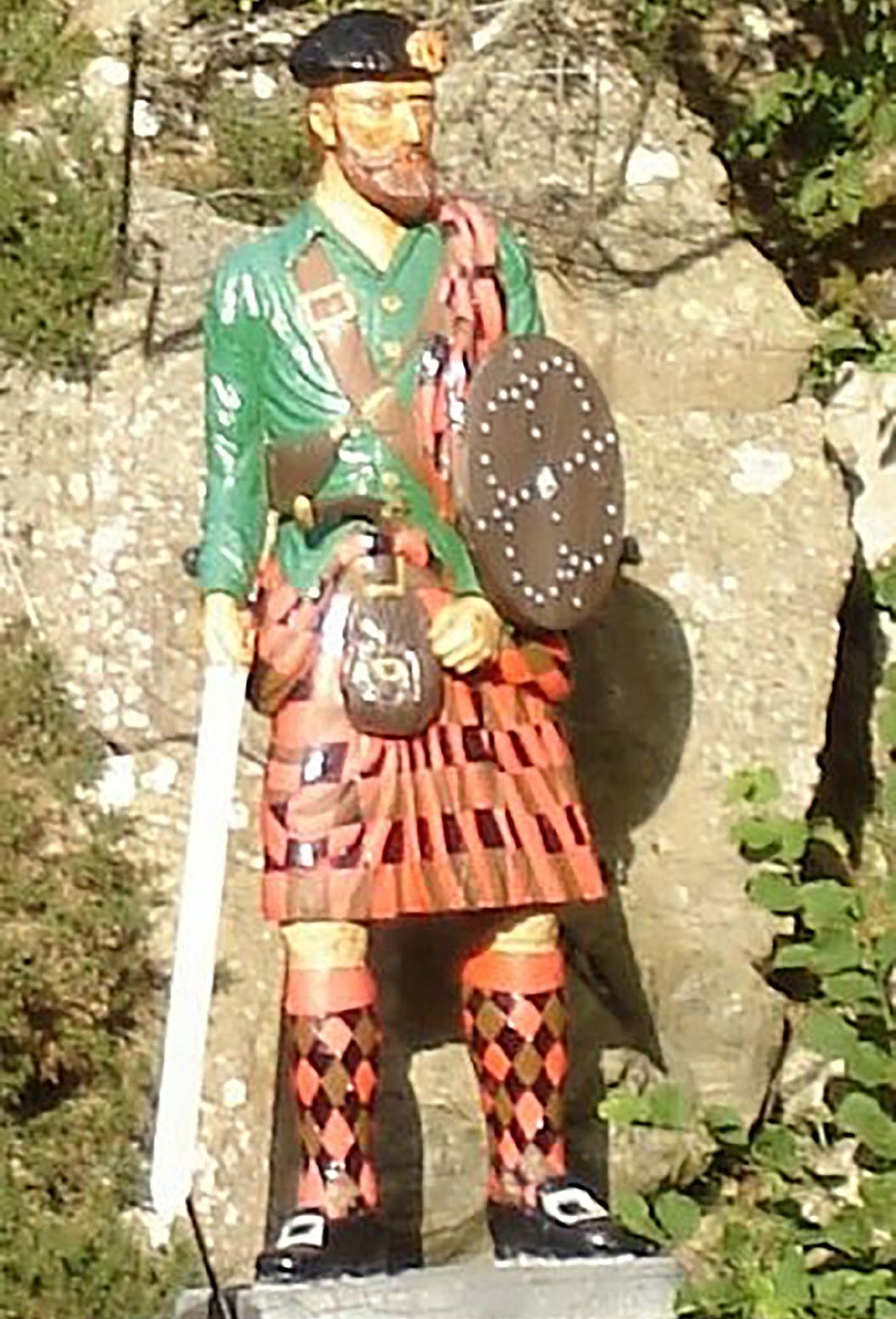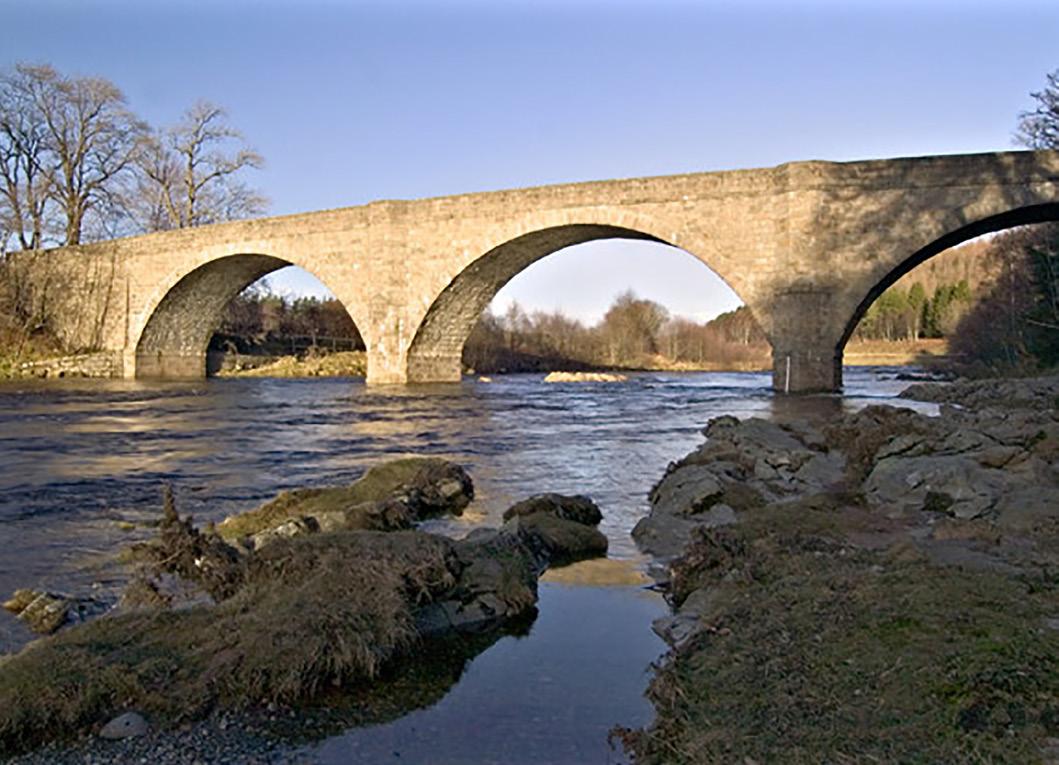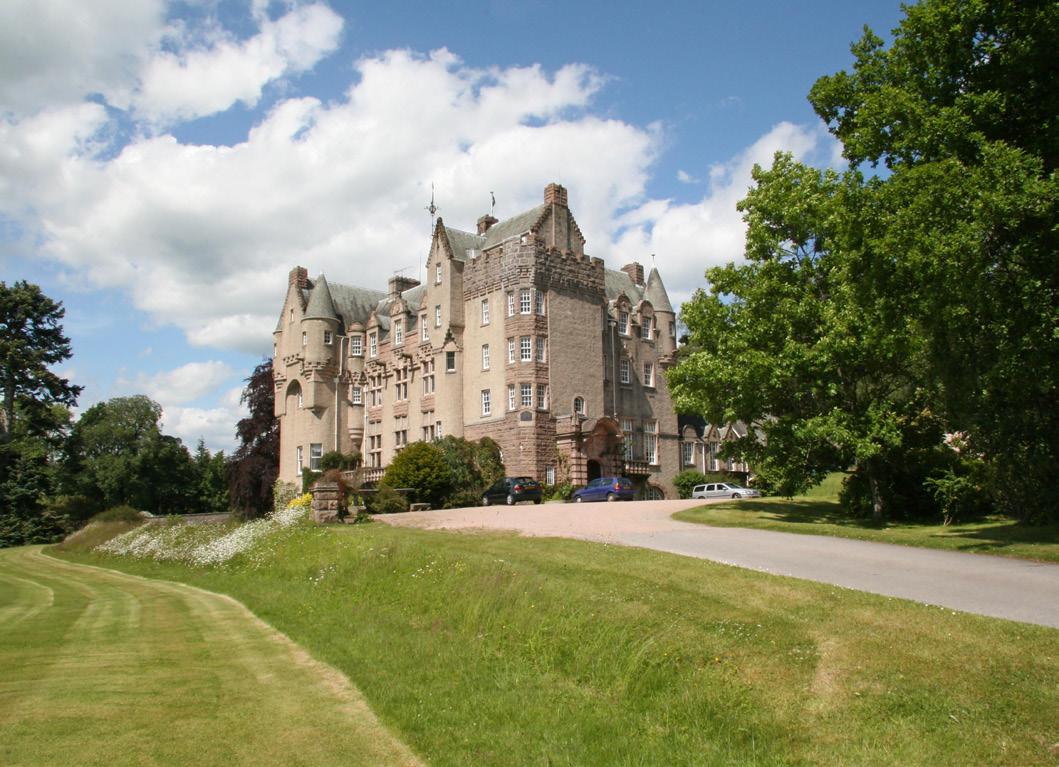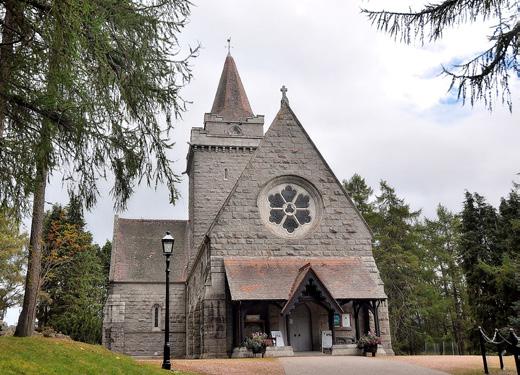
8 minute read
The delights of Deeside
It’s been dubbed the Route to Remember and the North East 250 is certainly a memorable experience.
The 250 miles long and winding road takes in some of the most beautiful landscapes in Scotland with history, legend and wonder around almost every corner.
Advertisement
The easy to follow circular course overlooks breathtaking seascapes of the wild Moray Firth and goes through picturesque east coast fishing villages. It passes by the green woods and tumbling waters of Speyside and Royal Deeside. It takes in both the bright lights of Aberdeen and the heather clad mountains and hills of the Cairngorms.

The River Dee, Braemar
Photo by VisitAberdeenshire
It is a route that can be accomplished in a day but, to really appreciate the romance and beauty of this often over-looked part of Scotland, it is much better appreciated in stages.
Starting from the Bridge of Dee, on the edge of Aberdeen, the first section of the circuit to Crathie is only about 50 miles long and is full of history and spectacular scenery.
Heading out on A93 from the Granite City, as Aberdeen is universally known, the first stop along the route is Peterculter.
Now pretty much a suburb of the city this ancient settlement has been around for centuries. The name Culter is thought to be derived from the Gaelic for 'back part' of the country and it's a fitting description.

Glen Tanar
Once a stop-off for Romans - there's a site of a Roman marching camp about a mile out of town - the area is surrounded by prehistoric remains, numerous burial mounds and even remnants of a druid temple.
Over subsequent centuries the town has been associated with the Knights Templar, smugglers of illicit whisky and even the notorious Rob Roy Macgregor.
The famous outlaw had family living in the area and he is known to have visited his clansman James Gregory to raise support for the Jacobite rebellion of 1715.
One of the town’s most famous landmarks is an effigy of Rob Roy on a rocky outcrop above the Coulter Burn on the western edge of the town. Although changed several times over the years there has been a statue on this spot since around 1850 to honour a local legend that he leapt across the burn at this that point to escape a party of red coat soldiers hot on his heels.

Painted statue of Rob Roy Macgregor
Photo by RJ Sutherland CC BY-SA 3.0
Some 12 miles from Peterculter - through Craiglug, famous for an important example of an early suspension bridge and the sole survivor of four of its kind that crossed the River Dee in the early 19th century - lies the village of Durris.
Kirkton of Durris, to give its full name, derives from the Gaelic word dorus, meaning door or opening. This ancient settlement has guarded the northern end of the Crynes Corse Pass over the Mounth for hundreds of years.
In the 13th century Durris was the site of an early royal residence dating back to the days of Alexander III. Durris Castle, which for one night only hosted King Edward I of England during his invasion of Scotland in 1296, was granted to the Fraser family by Robert The Bruce.

Fishing in the River Dee
Photo by VisitAberdeenshire
Not far from the site of the castle there is Durris House, which dates from the 17th Century and has links to both the Frasers and Gordons.
In 1837 the estate was sold to Anthony Mactier, a wealthy East India merchant and Registrar of the High Court of Calcutta who was rumoured to have been involved with pirates. When he died in 1854 the property passed to his son Alexander and was then sold in 1871 to James ‘Paraffin’ Young. He was the Scottish chemist who discovered how to extract oil from shale and is credited with developing the world’s first oil refinery.
From Durris the road goes to Banchory, through Crathes - site of the Crathes Castle, an ancient seat of the Burnett of Leys family.

Photo by Damian Shields / NE250
The castle is renowned for its painted ceilings and fine furniture and contains the ancient Horn of Leys, which was gifted to the family by Robert the Bruce.
Not far from Crathes is another big house of note. Drum Castle, which was given to the Irvine family by Robert the Bruce in 1323, is famous for its library of over 4,000 books.
Next stop on the road is the hamlet of Potarch where the local cafe next to the bridge, built in 1812 by the celebrated engineer Thomas Telford, is famous as the home of the original Dinnie Stones.
Now, copied as an event in Highland Games around the world, the Dinnie Stones were made famous by strongman Donald Dinnie in 1860. He carried the stones, weighing an incredible 733lbs (332.49kg) barehanded across the width of the Potarch Bridge, a distance of 17 ft 1.5 in, and back again! .

The Bridge at Potarch
Photo by Phil Smith CC BY-SA 2.0
From Potarch the route goes through Kincardine O'Neil, one of the oldest villages on Deeside and known locally as Kinker.
Situated on the north bank of the Dee it overlooks one of the most important fords across the river. In 1150 King David I crossed here with his army and Edward I of England took 35,000 men across the river in 1296 and camped in the village, consuming the villagers’ entire supply of food and drink for a year in one day.
Near the village lies Kincardine Castle, one of many spectacular Victorian country houses on Deeside. A private home, it is open by prior arrangement for exclusive-use events and accommodation. The house was built in 1894 and designed in part by David Barclay Niven who went on to create designs for the Victoria and Albert Museum, London’s Admiralty Arch and the principal facade of Buckingham Palace.
The next stop on the road is Aboyne. The name of the village comes from “Oboyne” and was first mentioned in official records around 1260. It’s thought to be a corruption of the Gaelic words ‘abh’, ‘bo’, and ‘fionn’, meaning ‘place by white cow river’.
On 3 September 1715 John Erskine, sixth Earl of Mar, organised a ‘tinchal’ or great hunt at Aboyne. It was actually a cover for a secret meeting of Jacobite lairds ahead of the Jacobite rising that began three days later in Braemar.

Kincardine Castle
Photo by Andrew Bradford CC BY-SA
The village is famous for its Highland Games, held every August on the village green, and is a favourite destination for visitors looking to indulge in a range of outdoor pursuits, including mountain biking, water sports, walking and gliding.
Golf is also a big draw as the local club is the oldest on Deeside and is often regarded as one of the most beautiful inland golfing venues in North East Scotland.

Aboyne Golf Club
Photo by VisitAberdeenshire
Six miles from Aboyne lies Dinnet, the first village inside the Cairngorms National Park.
Nearby are Loch Kinord, Loch Davan and the Burn O’Vat, a pothole created over thousands of years as a result of the melting ice-age. Legend has it that Rob Roy used to hide in the cave behind the waterfall, although some say it was more likely to have been a sanctuary for Patrick Gilroy Macgregor. He was another outlaw who roamed the region in the 17th century and was possibly a relative of Rob Roy.

Burn O’ Vat waterfall
Photo by Alasdairaph CC BY 3.0
The area has been popular with tourists ever since Queen Victoria visited the area which acts as a gateway to Glen Tanar - 25,000 acres of breathtaking Highland scenery that is home to golden eagles, herons, red squirrels, an abundance of other wildlife and one of the best salmon fishing rivers in the country.
From Dinnet the road to Crathie goes through Ballater which used to be part of the estates of the Knights of St John in the 14th century.
Sometime around 1760 a woman claimed to have been cured of a fatal disease after drinking and bathing in the water from the nearby Pannanich Wells and word soon got around. Within a few years the area was transformed into a spa town to cope with thousands of visitors who flocked to Ballater each year to ‘take the waters’.
Among the many historical figures who visited the spa was Lord Byron, Sir Walter Scott and Queen Victoria, who made her first visit in 1856 and even wrote about it in her Highland Journals.

Balmoral Castle
Photo by Damian Shields / NE250
The area has been closely linked with royalty ever since. Balmoral, the Queen’s Highland home is only a short distance away and Ballater used to be the nearest railway station to the estate.
For the best part of a century Ballter saw many of the crowned heads of Europe and leading statesmen pass through its streets, including the Czar of Russia in 1896, as they cam to visit Queen Victoria and her heirs.
The final eight miles of the first leg of the route from Ballater to Crathie, which is probably best known for its royal connections.
Whenever she is staying at Balmoral the Queen attends Sunday services at Crathie Kirk, the parish church.
Nearby Balmoral has been a favoured retreat of royalty since Prince Albert bought the estate in 1852. The hills around the village are dotted with various memorials to Prince Albert, consort to Queen Victoria, and some of his children. John Brown, Queen Victoria’s favoured man servant, is also buried in the grounds of Crathie Kirk.

Crathie Kirk near Balmoral
Photo by Herbert Frank CC BY2.0










